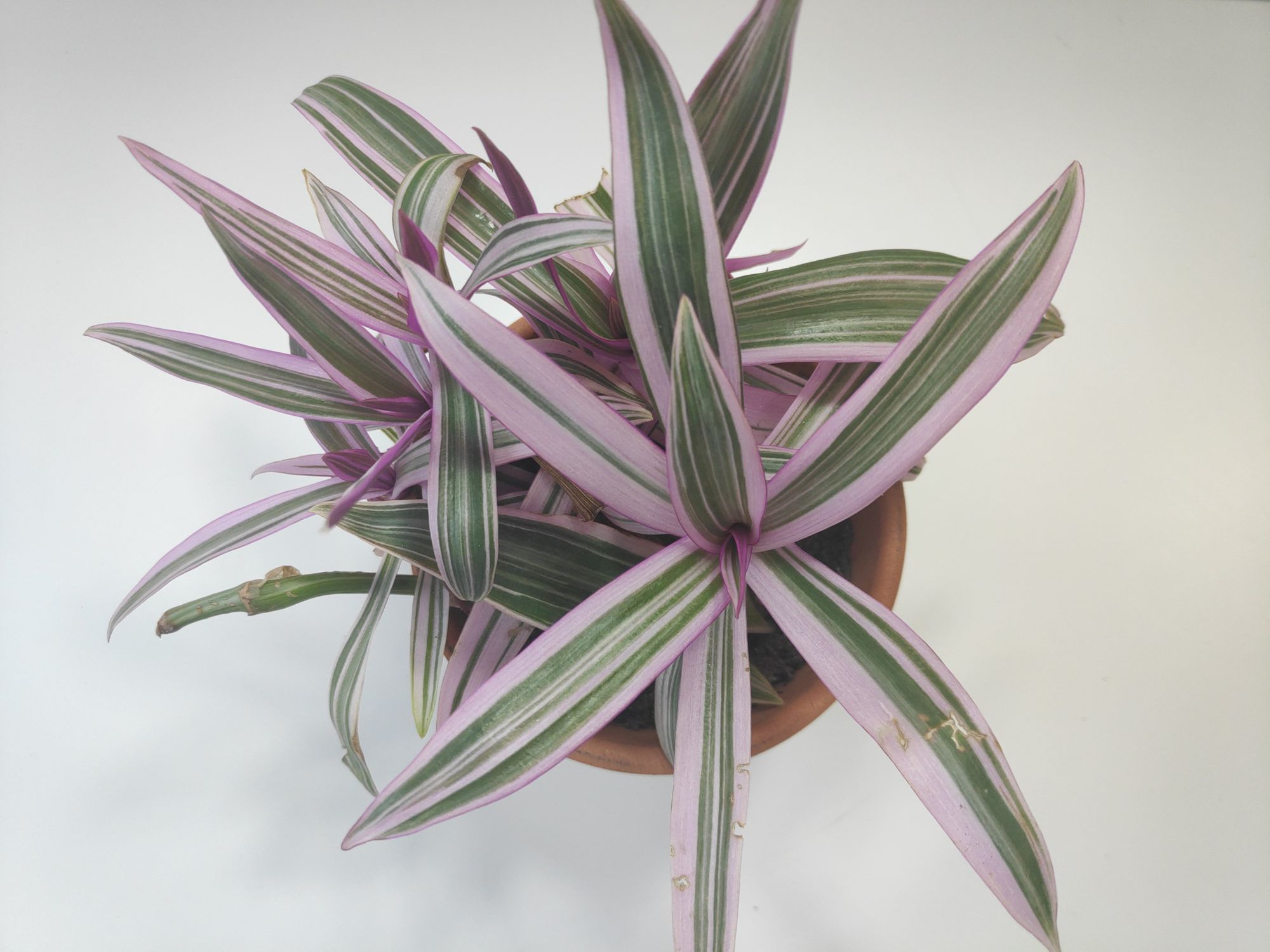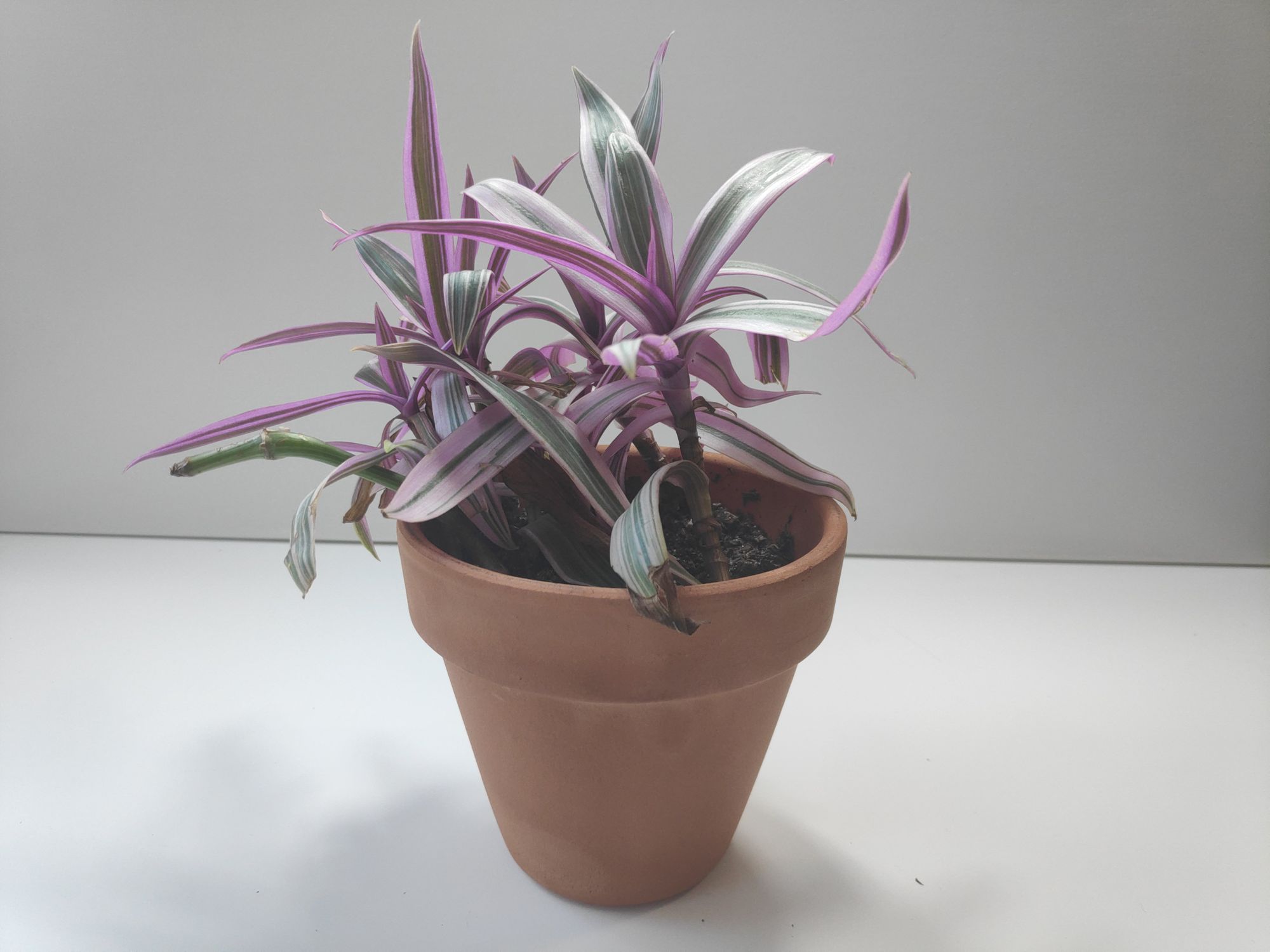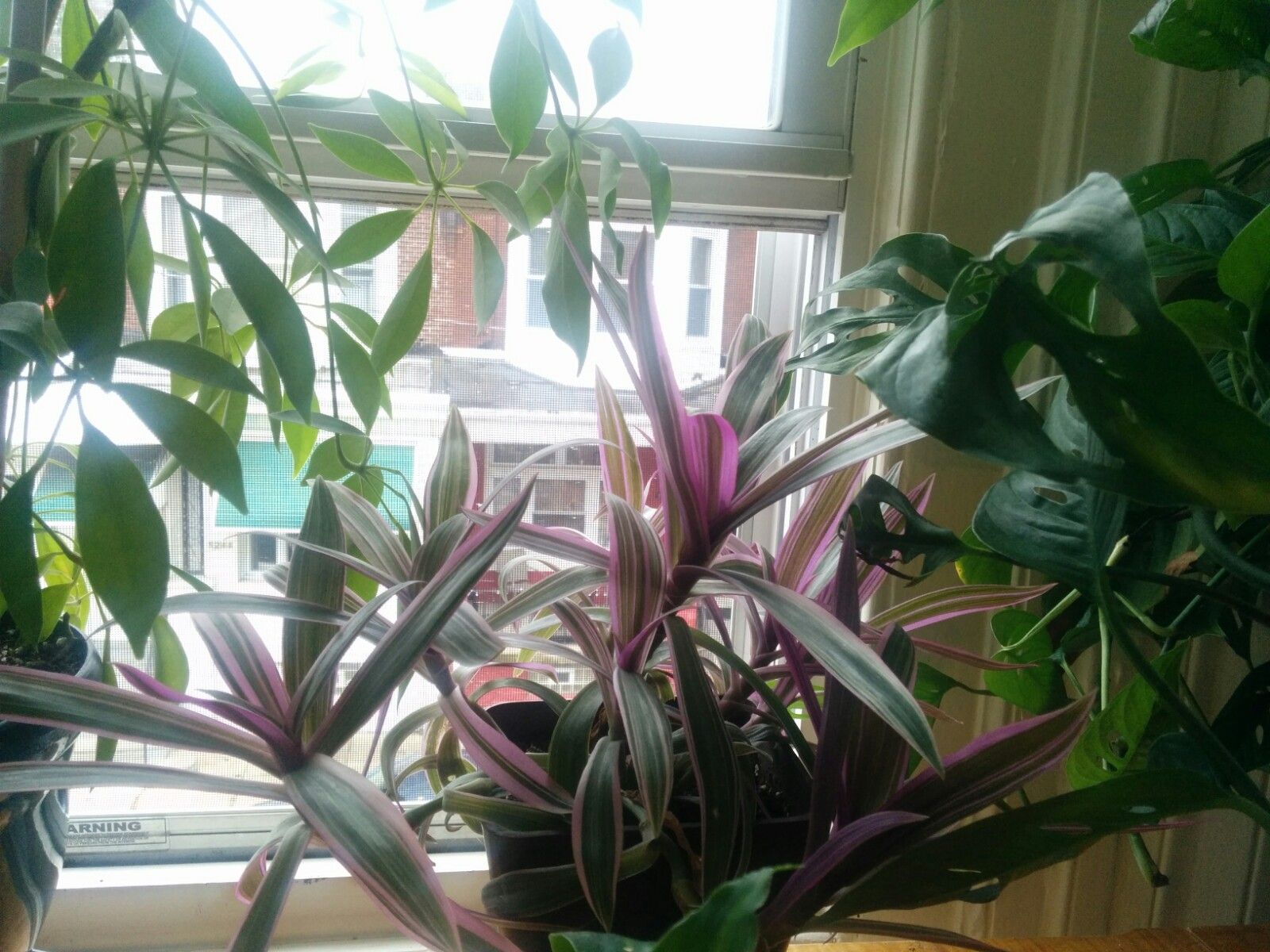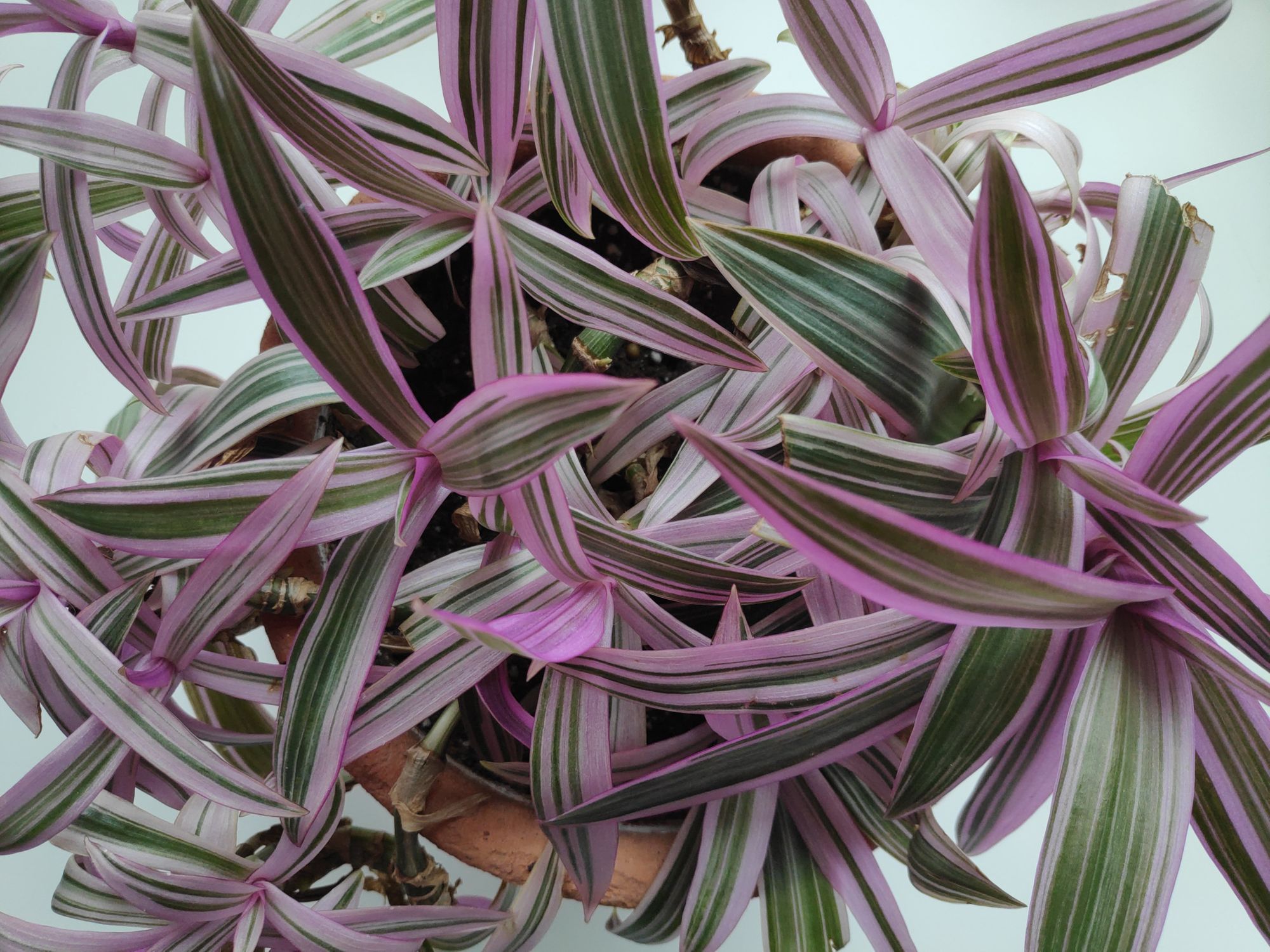Tradescantia spathacea, common names: Boat lily, Moses-in-a-basket, oyster plant, Rhoeo spathacea (former name)
Plant Care Cheat Sheet
Difficulty Level: Easy
Light Requirements: Bright light, direct or indirect
Humidity Requirements: Standard room humidity
Tradescantia spathacea is a beautiful and easy houseplant for beginners, as long as you have enough light to provide the plant. The gorgeous purple variation on the leaves provides a pop of color to any plant collection. The plant is low maintenance, a decently fast grower, and easy to propagate - making it a great plant for anyone.
Care Requirements
Tradescantia spathacea is similar to succulents in its environmental condition requirements. It prefers bright light, and is tolerant of direct sun for a couple hours per day. It should be happy in a South, East, or Western facing window sill. The more sun provided to this plant, the faster it will grow offshoots.
If your plant starts to stretch out, this means it's not getting enough light.
The oyster plant, as it's sometimes called, prefers to dry out in between watering. Use a well-draining potting mix (succulent or cactus mixes work well), and be sure your pot has a drainage hole.
Overwatering can lead to rot, and is a bigger risk for this plant than under watering. The oyster plant is usually happy in a terracotta pot which helps whisk away extra moisture to prevent watering. It is natural for the lower leaves to brown up and fall off over time, however if you have a lot of leaves yellowing or rotting off, consider letting the plant dry out some more.
This Tradescantia won't do well in the cold, so keep it away from draft windows in winter.

Propagating Tradescantia spathacea
Propagating the oyster plant is super easy. The plant produces offshoots which can be removed and re-potted in soil, or rooted in water first.
When removing a shoot, cut as close to the main plant as possible to optimize your chance of rooting. You may want to dip the cut end of the stem in rooting hormone prior to planting the cutting in soil to help encourage growth, however it is not necessary.
If you keep your Tradescantia happy, you may soon have many to share!

Danger: keep away from pets!
Tradescantia spathacea is toxic to pets (and humans!). The leafs contain a sap which is irritating to the mouth if consumed, and may harm anyone who eats it. From personal experience, cats love to chew on this plant - so be sure to keep it well out of way of any pets or children!
If you break a leaf and get the sap on your hands, wash your hands immediately and do not touch any sensitive areas like the eyes or mouth.


